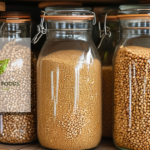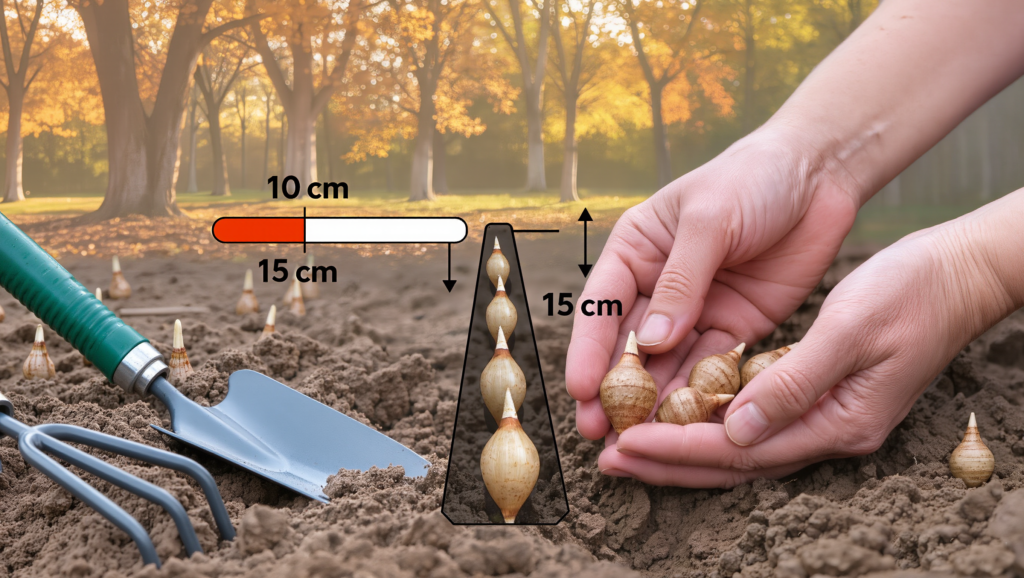So you have your home garden set up either in plont pots or in actual garden or farm, then the headache of soil management starts to crop up. Have no fear, we have got you covered in this post. We’ll explore various organic methods for soil management that promote long-term productivity and environmental stewardship.
1. Composting: Building Soil Fertility Naturally
Composting is one of the most effective ways to enhance soil fertility organically. It involves the decomposition of organic matter, such as plant residues, kitchen scraps, and manure, into a rich, nutrient-dense material called compost.
Benefits of Composting:
- It is a Nutrient-Rich Fertilizer: Compost adds essential nutrients like nitrogen, phosphorus, and potassium to the soil, which are crucial for plant growth .
- Improves Soil Structure: Compost helps improve soil texture, making it more friable and easier to work with. It enhances soil aeration and water retention, benefiting both sandy and clay soils .
- Boosts Microbial Activity: The organic matter in compost supports a diverse community of beneficial microorganisms that play a key role in nutrient cycling and disease suppression .
How to Compost:
- Select the Right Materials: Use a mix of green (nitrogen-rich) materials like vegetable scraps and grass clippings, and brown (carbon-rich) materials like leaves and straw.
- Maintain a Balance: Aim for a carbon-to-nitrogen ratio of about 30:1. This helps the compost pile break down efficiently.
- Turn the Pile Regularly: Aerating the compost by turning it regularly speeds up decomposition and prevents odors.
2. Cover Cropping: Protecting and Enriching Soil
Cover cropping involves planting specific crops, such as legumes, grasses, or grains, during off-seasons or between main crops. These plants are not harvested but instead are grown to protect and enrich the soil.
Benefits of Cover Cropping Includes:
- Erosion Control: Cover crops protect the soil from erosion by wind and water, keeping the topsoil intact .
- Nitrogen Fixation: Leguminous cover crops, like clover and vetch, fix atmospheric nitrogen into the soil, reducing the need for synthetic fertilizers .
- Weed Suppression: Cover crops outcompete weeds for light, water, and nutrients, reducing the weed seed bank in the soil .
- Soil Structure Improvement: The roots of cover crops help to improve soil structure by creating channels for air and water movement and by breaking up compacted soil layers .
How to Implement Cover Cropping:
- Choose the Right Cover Crop: Its important to select cover crops based on your soil type, climate, and the specific benefits you seek, such as nitrogen fixation or erosion control.
- Timing: Plant cover crops at the right time, either during the off-season or between crop rotations.
- Terminate the Cover Crop: Before planting your main crop, terminate the cover crop by mowing or plowing it into the soil as green manure.
3. Crop Rotation: Preventing Soil Depletion and Pests
Crop rotation is the practice of alternating different types of crops in a specific sequence on the same field over several growing seasons. This method helps prevent soil nutrient depletion and disrupts the life cycles of pests and diseases.
Benefits of Crop Rotation:
- Nutrient Management: Different crops have varying nutrient requirements and root structures. Rotating crops ensures that no single nutrient is depleted from the soil .
- Pest and Disease Control: Rotating crops can break the life cycle of pests and pathogens that specialize in specific crops, reducing the need for chemical interventions .
- Soil Health Improvement: Crop rotation improves soil structure and fertility by promoting diverse root systems and microbial activity .
How to Practice Crop Rotation:
- Plan Your Rotation: Divide your crops into categories based on their nutrient needs (e.g., heavy feeders, light feeders, nitrogen-fixing legumes).
- Rotate Annually: Ensure that the same crop or crop family is not planted in the same location two years in a row.
- Include Cover Crops: Incorporate cover crops into your rotation plan to further enhance soil health.
4. Mulching: Conserving Moisture and Suppressing Weeds
Mulching involves applying a layer of organic material, such as straw, leaves, or compost, on the soil surface. This technique conserves moisture, suppresses weeds, and improves soil fertility.
Benefits of Mulching:
- Moisture Retention: Mulch reduces evaporation from the soil surface, helping to maintain consistent soil moisture levels .
- Weed Suppression: A thick layer of mulch blocks sunlight, preventing weed seeds from germinating .
- Soil Temperature Regulation: Mulch acts as an insulating layer, keeping the soil cooler in summer and warmer in winter .
- Nutrient Addition: As organic mulches decompose, they add nutrients and organic matter to the soil, enhancing fertility .
How to Apply Mulch:
- Choose the Right Material: Use organic mulches like straw, leaves, wood chips, or compost for their added benefits to soil health.
- Apply a Thick Layer: Spread mulch evenly over the soil, applying a layer that is 2 to 4 inches thick.
- Replenish as Needed: Organic mulches decompose over time, so it’s important to replenish them periodically to maintain their benefits.
5. Vermicomposting: Harnessing the Power of Worms
Vermicomposting is a process where earthworms are used to convert organic waste into nutrient-rich vermicompost, also known as worm castings. This method is highly effective for small-scale organic farming and gardening.
Benefits of Vermicomposting:
- Rich in Nutrients: Vermicompost is packed with essential nutrients and beneficial microbes that enhance soil fertility and plant growth .
- Soil Structure Improvement: The castings improve soil structure, promoting better aeration, water retention, and root penetration.
- Eco-Friendly: Vermicomposting recycles organic waste, reducing the need for chemical fertilizers and minimizing waste sent to landfills .
How to Start Vermicomposting:
- Set Up a Worm Bin: Choose a suitable container and fill it with bedding material like shredded newspaper, cardboard, or coconut coir.
- Add Worms and Food: Introduce red wigglers or other composting worms, and feed them organic waste such as vegetable scraps, coffee grounds, and eggshells.
- Harvest Vermicompost: After a few months, harvest the nutrient-rich worm castings and apply them to your soil as a natural fertilizer.








